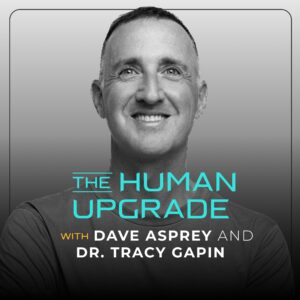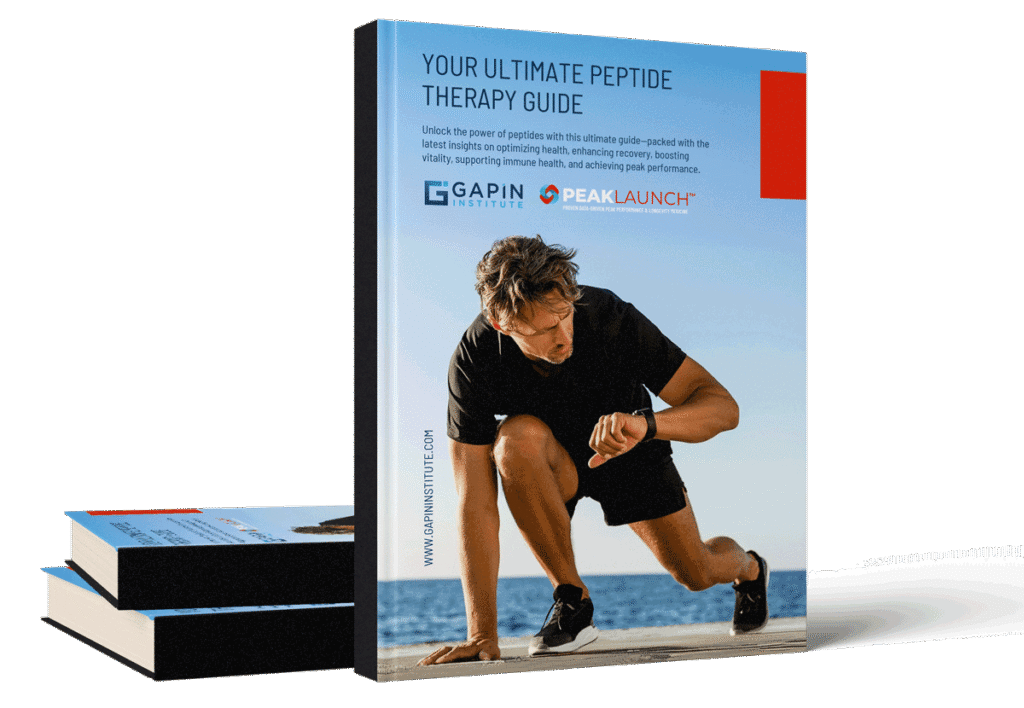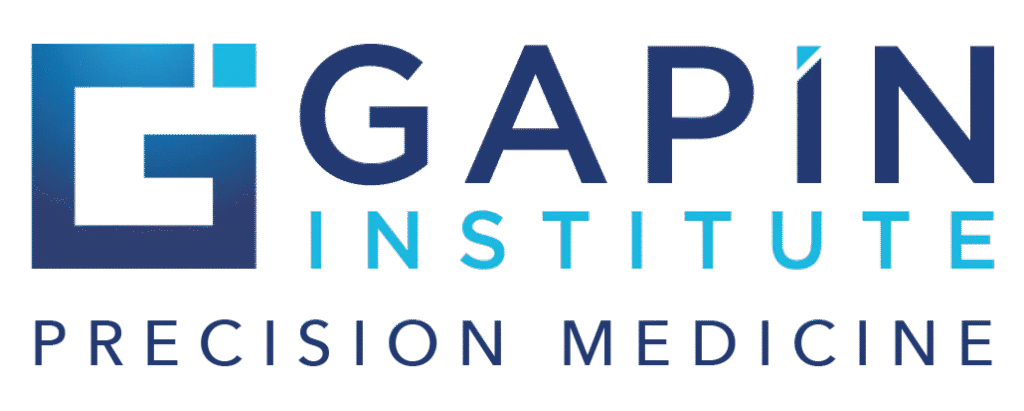
Your stress is literally killing you.
Stress has a serious impact on mental health. Stress can quickly deteriorate into anxiety and depression, which drastically worsens your quality of life. In some cases, it can even lead to suicide. Suicide is currently the 10th leading cause of death in the United States. In 2017, white males in middle age accounted for 77.97% of suicide deaths.
But it’s important to recognize that the impact of stress is not just mental. Stress impacts you physically as well.
When you’re stressed, your body releases cortisol and adrenaline. These are the hormones that control your fight or flight response. Stressing literally puts your body into a constant state of unrest, thinking it needs to fight something or run away as fast as possible. This gets pretty exhausting. So you use up energy on “fighting” nothing but your own brain.
Elevated cortisol levels have been associated with low testosterone. And low testosterone is linked to a lot of health concerns, including anxiety, poor sleep quality, lowered sex drive, weight gain, reduced muscle mass, infertility, and more. Learn more about testosterone here.
Stress has been linked to:
- Heart and blood vessel damage
- Lowered immune response
- Impaired memory and cognitive abilities
- Infertility
- Premature aging
- Worsened quality of sleep (which has its own slew of health problems, even down to the genetic level)
When you feel stressed, you just don’t perform to your full potential. Life seems a little duller and foggier, and you can’t seem to get your legs beneath you. Every area of your life seems to start to unravel, even if it’s not related to your primary stressor.
Stress has even been proven to cause early mortality (aka you’ll die sooner)!
Read: Epigenetics- Does Stress Affect Your Genes?
Enter meditation.
Meditation has become the hottest trend in healthcare right now—and for a good reason. It’s proving to be one of the best ways to take control of your physical, mental, and emotional health
Meditation isn’t new. Meditation practices go back to the 5th century BCE (and likely even earlier). But the practice has become more popular recently as more and more research is proving that meditation has seriously positive impacts on mental and physical health, from reducing stress to improving productivity—to even extending your lifespan!

I know what you’re thinking. “I barely have time to drink water, let alone time for meditation.” Or, “I’m not into all that spiritual stuff.”
First, meditation takes no more than five minutes a day. And I’ll give you tips to do it when and where it’s most beneficial for you.
Second, Meditation isn’t only for the spiritual (although it can definitely help you connect more with your spiritual side, if that’s a goal of yours). Meditation is proven to literally mold your brain to think more critically and creatively while reducing stress, anxiety, depression, pain response, and negative emotions.
Let’s take a look the benefits of meditation and how meditation scientifically impacts the brain. Then, I’ll give you some simple tips to get you started with mindful meditation today. (It really is that simple!)
Benefits of meditation
Meditation promotes:
- Relaxation
- Reduced mental chatter
- Quality of sleep
- Focus and attention
- Positive shifts in mood, including more compassion and less aggression
- Health and wellness
- Less stress, depression, and anxiety
Meditation has one huge benefit: it helps you stress less. It helps you better manage long-term stress and respond to short-term stressors. The practice literally trains your mind and nervous system to see stress as positive and manageable, which can completely transform the way you handle life.
Meditation is the most effective way to ease your stress. Studies prove that mindfulness practices literally rewire your brain to feel less stress and more positivity. And when you feel better, it’ll radiate to other parts of your life like your physical health, work, productivity, relationships, hobbies, and more.
We’ll delve even deeper into these benefits when we talk about how meditation scientifically impacts your brain below.
Neuroscience of meditation

All of those benefits are proven. It’s not just that meditation makes you feel better—which it does. But it actually changes the structure of your brain. Researchers have been surprised at the results they’re seeing when they take a look at MRIs of brains experiencing meditation practices.
Neuroplasticity is a complex topic, but here are the basics for our purposes in this guide. Neuroplasticity refers to how the brain can actually reorganize by forming new neural connections. This process can happen throughout life. New neurons appear in response to injury and disease, but they also show up in response to new situations or changes in environment. This means the brain is malleable, so your mind can actually physically change and improve based on external stimuli.
Meditation is a strong stimulus that can change the brain’s structure and actions.
Meditation impacts an entire network of brain regions.
In a review of 21 neuroimaging studies, researchers found that there were eight brain regions that were permanently altered in 300 expert meditators (who’d been practicing for awhile). It’s interesting to notice which areas of the brain are impacted long-term by meditation, because it says something about how meditation influences our thoughts processes:
- Hippocampus: involved in memory formation and emotional responses
- Rostrolateral pre-fontal cortex: associated with meta-awareness (awareness of entire world), introspection, and processing of complex information
- Sensory cortices and insular cortex: processes tactile information like touch, pain, and body awareness
- Anterior cingulate cortex and mid-cingulate cortex: involved in self-regulation, self-control, emotional regulation, and attention
- Superior longitudinal fasciculus and corpus callosum: helps communicate within and between brain hemispheres
What can we glean from these altered brain regions? Meditation helps you think more critically, more clearly, and more positively. It may even improve response to physical and emotional pain.
How did meditation actually “impact” these areas? For the most part, there were physical changes in density and thickness of brain tissue as well as white matter fibre density. (White matter plays a role in learning and communication between brain tissues.) So meditation essentially makes your brain bigger and more communicative.
But what I think is most important about this study is that it proves meditation impacts several areas of the brain. It’s likely that meditation requires large-scale brain networks and functions. When you’re turning your brain “off” to meditate, you’re actually activating parts of the brain that impact your everyday thoughts and behaviors!
Here’s how we break it down. The brain is like a muscle. The more you work it, the more it grows. But the brain is very malleable, so working it the wrong way can also have a negative impact. It’s like if you lifted weights incorrectly and you strain or tear the muscle.
But meditation activates different areas of the brain in a healthy way, which molds the brain positively and effectively.
Meditation brings you into the present.
Everyone experiences stress. But ultimately, when it comes down to it, there are only three things that cause stress:
- Thinking too much about yourself.
- Ruminating about the past.
- Worrying about the future.
Don’t believe me? Try it with whatever you’re stressed about. Pull the stressor down to its roots.
Worried about your kids? You’re actually worried about yourself. You’re worried your kids won’t end up the way you want them to. Or, you’re worried about the future—which you can’t control (especially when it comes to your kids).
Scared about a presentation you have to give? Your anxiety of the future can actually ruin your chances of doing well. If you focus on the present, you can instead focus on preparing for your speech.
The problem with the self

“All suffering is an obsession with self.” – Tony Robbins.
We’re never stressed when we’re giving. We only feel anxiety when we get into our own heads about personal survival. It’s important to address our own needs, but it’s also the fastest route to stress. In fact, studies show that the “ego” and self-absorbed thoughts are directly linked to anxiety and depression.
Meditation pulls you out of your head and into the world around you.
The problem with the past
The past isn’t changing. You can take actions now to rectify certain situations, like forgiving or asking for forgiveness. But what’s done is done, and you can’t control it. It’s like watching a TV show of your own life. You can’t reach through the glass to change what’s already been filmed.
There’s some beauty in the past. It’s okay to think back to positive memories. In fact, meditation will sometimes encourage you to bring up a beautiful memory to instill certain emotions in you. But even the positive memories can make you live in the past and nostalgic for “a better time,” which can take away from the beauty of the present.
The problem with the future
Mark Twain once declared, “I’ve suffered a great many catastrophes in my life. Most of which never happened.”
We kill ourselves worrying about the future—whether or not the situation comes true. And even if it does happen, your worry didn’t do anything to help it. In fact, that anxiety you felt probably prevented you from taking effective action.
Here’s where a lot of men push back, because men are natural go-getters. “Thinking about the future is the only way I’ll get to my goals.” That’s true! But you want to think about the excitement of the future and what you can do in the present to get there. Worrying or speculating about the future will quickly lead you into a spiral of anxiety.
Meditation helps you break those mental patterns.

There are studies to prove that meditation helps you focus on the present, as opposed to the past or future.
When you’re daydreaming or simply going about your day, your brain is in default mode network (DMN). This is when you’re not really thinking about anything, but you’re also not mindful of anything. When looking at the MRI, the parts of the brain that light up in the DMN are those related to rumination and self-reflection.
During the DMN, the amygdala especially lights up. The amygdala is the part of the brain that controls the fight or flight response, decision-making, and emotional responses like fear and anxiety. Other studies have shown that the amygdala is more active when people are stressed. This, in turn, can actually worsen the decision making process. (That’s why you might make worse decisions when you’re stressed than if you had a “clear mind.”)
So just going through the motions of life may actually activate your stress!
But there’s an opposing network called the task positive network (TPN). This is the network that’s active when you’re focusing your attention on something. It’s responsible for present moment awareness. It’s when you direct your thoughts on one specific idea or task. It could be a work project or a task on your to-do list, but it could also be as simple as taking a moment to think about how delicious your cup of coffee is or enjoying the way your partner laughs at a bad joke.
It probably seems a little backwards. The DMN is when you’re not thinking, but you’re more stressed. But when you direct your thinking with the TPN, you don’t stress.
That’s because our brains want to be working so they don’t get lazy, but you have to direct the brain to work for you.
The DMN activates the rumination part of the brain. Rumination is linked to anxiety related to the past and future. But the task positive network is responsible for whatever task you’re currently doing. It brings you into the present.
Only one network can be active at a time. So, if you want to get out of stress and anxiety, you have to move into the TPN.
Meditation activates the task positive network. When you bring your attention to something—even if it’s a sound, smell, sensation, or breath—you come into the present moment.
Imagine it this way. You have a light bulb. Put that light bulb in a large room and it will add some light, but it won’t brighten the entire room. Now direct that light to a single point on the wall and it will be bright and clear.
The more focused the light, the brighter it will be. The same is true of your brain. The more focused your thoughts, the clearer and more positive they’ll be!
How to meditate
The goal of meditation isn’t to make your mind blank. It’s to bring attention to the present moment.
I’ll be honest… meditation isn’t easy! The first few times I did it, I actually felt more stressed. I would count my breathing and start thinking about how to breathe faster or why I wasn’t breathing this way all the time or why you count sheep while you sleep or why I wasn’t sleeping now… The train of thought can quickly spiral, as you likely well know.
So the goal is to try to break that and simply focus on the now. If a thought comes, acknowledge it, say hi, and then let it go and bring your mind back.
Here’s how to get started:
Get comfortable. You can lie down or sit up, but make sure you feel physically relaxed. Keep your back straight and release all tension in your body.
- Focus on your breath. Fill up your belly as far as you can as you inhale. And then exhale slowly. Do this for two minutes.
- If you find your mind wandering, come back to the breath. Stay with the feeling of the breath.
- If something is going on in the world around you, take notice of it before coming back. Acknowledge the chirping birds. Smell the bacon cooking downstairs? Wait, bacon?! No, no. Come back to the breath. The bacon will be there in two minutes. Focus on the breath.
If you’re a beginner, I recommend trying the “counting breath” meditation. Breathe in for four seconds, hold for eight seconds, and exhale through your mouth (using your teeth as a blocker) for sixteen seconds. When you become a pro at this pattern, times those numbers by two for an even deeper breath. If you have a more goal-oriented mind, counting gives your mind something to focus on and it elongates the breath.
If you’re looking for a deeper mental challenge, meditate in the “space” between each breath. You’ll notice that there’s a brief pause between the inhale and the exhale. As you breathe, think about the emptiness of this gap. Learn more about the pause breath method here.
How to meditate at work

Most stress originates at work. So you want to have some meditative practices in your back pocket you can pull out when you’re feeling pressure at your job.
When you’re feeling stressed, stop everything. Turn off your monitor and put the phone aside. Sit up in your chair. Take 10 deep breaths, focusing only on the inhale and the exhale. It only takes a minute or two and you’ll instantly feel calmer. (Or throw in your headphones and listen to a short guided meditation on an app, which I list below.
You’ll also want to focus on keeping your desk clean. If you’re feeling stressed but can’t pinpoint why, it’s likely because your physical space isn’t clean and clear. Take a few minutes to organize and your brain will start to relax again.
Need a little more privacy for your meditation? Go in the bathroom. Do what you need to do to get your head right.
How to meditate at home
Get away from all the noise. Find a quiet space away from the kids and pets. Keep your phone and electronics in another room. I typically recommend using your bedroom and/or bed as your meditative space, because then you start to create a Pavlovian response to your bed that it’s a place to relax and unwind. (Never do work in bed, because it will have the opposite effect.)
When you’re at home, it can feel like there’s chaos around you. So just breathe. You only need two to five minutes. That’s a lot less time than you’re likely spending on social media or browsing the web, so consider shifting your time into something more productive.
Try: Meditation with your partner. Some studies suggest that daily meditation with your partner can actually increase your emotional connection.
You can also meditate while doing household chores. Listen to the tinks in the washing machine while you’re folding clothes. Admire the soap bubbles while washing the dishes. This is a great time just to be present while reducing physical and mental clutter.
How to meditate working out
Working out is one of the best times to clear your mind and come back into the present. Exercise is meditative in it of itself. You’re pushing your body, so you have to focus on your breath more. This is the whole purpose of meditation: to focus on one task, aka your breath. When you’re lifting weights or running, you’re putting your body into a repetitive motion that gives you the time to focus solely on that task and your associated breath.
If you like to listen to music when you workout, use the music as meditation. Focus on the voice, the different instruments, and the beats. Breathe in tune with the music for even more alignment.
When you enter the gym (or any other spot you’re working out), leave your stress at the door and focus on having the best workout of your life.
Pro-tip: Push yourself past your limits. Do two more reps than you think you can. This is where your muscles—and mind—see the greatest growth. When you push past your limits, your mind actually re-wires. It starts to realize that the limitations you place on yourself don’t exist. As David Goggins says, callus your mind: “You have to suffer. You have to make a tattoo on your brain, so that when hard times come again, you don’t forget it.”
Meditation and pushing yourself to the next level work together to completely transform the structure of your mind.
Read: Can High Intensity Interval Training Make You Manlier?
How to meditate in the car
I’d like to preface this by saying your first and foremost focus should be on the road. But driving meditation can actually work really well, especially if you tend towards road rage.
Don’t close your eyes and do the typical meditation stuff. Instead, focus on simply being in the present. Notice how the yellow lines are painted on the road or how the sun glistens on the pavement. Simply acknowledge all the things around you and take this time to focus on the beauty of the drive. I especially like to turn off the radio and listen to the little sounds my car makes as it’s working hard to get me to my destination. Think about how fortunate you are to have a car so you can travel to places and people easily.
This will make you more present, so you’ll actually feel more relaxed and fulfilled by the time you get to your destination. It may also make you a better driver because you’re noticing more on the road!
(Please always drive responsibly.)

Mindfulness apps
If you struggle to meditate on your own, it’s completely fine (actually, it’s recommended) to get some guidance.
There are over 2,000 meditation apps available on Apple and iOS. Don’t start stressing—I’ve narrowed it down for you to give you the ones that are most highly rated and backed by scientific studies.
Insight Timer: This app has one of the largest databases with over 13,000 guided meditations on topics like stress, relationships, creativity, productivity, and more. It also includes podcasts for inspiration and music tracks to soothe your mind. It’s great for short bursts of blasting stress or long meditative sessions.
Headspace: They’re promoting all over social media, and they’re changing a lot of people’s lives. They use science-based meditations, animations, articles, and videos to help you train your mind. This one’s definitely worth looking into.
Calm: Tranquil sounds and music instantly relax you when you open the app. It offers shorter meditation practices, great for beginners and busy meditators. We also love the sleep stories that are made to help you fall asleep (great for the anxious nighttime owl).
Stop, Breathe, and Think: When you sign in, you’re asked to input how you’re feeling. It’ll then recommend meditations and videos tailored to how you feel. I especially love this app because it includes a Learn section that describes the neuroscience and physiology behind meditation!
10% Happier: This app is for “fidgety skeptics.” It’s more about sharpening your mind through meditation than it is about the spiritual aspect. I like this app because it was created by Dan Harris, who’s a news anchor who had a panic attack on live TV that pushed him to pursue meditation. He’s just like the rest of us busy guys. Let his breaking point be your learning point.
You can also try ASMR videos. Go on YouTube and search ASMR, and click on a video that speaks to you. ASMR (autonomous sensory meridian response) is a tingling sensation on the skin, typically in the head and upper back. It’s spurred by certain sounds, words, and “personal attention,” and it’s shown to have a seriously relaxing effect on a lot of people. It helps bring you into the present moment by focusing on one specific task. It’s not for everyone, but it’s worth a shot to see if it will help you chill out or fall asleep.
Need help ? Here's an in-depth resource incorporating meditation into your bedtime routine.
Let’s meditate
The purpose of mindful meditation is to bring you into the beauty of the moment. There is always something you can be thankful for. When we’re in the present, we release the anxieties of the past, the future, and the self. We acknowledge the world around us. This helps reduce stress and mental chatter, but it also has a serious scientific impact on the brain. You’re literally training your brain to think critically, creatively, and clearly. You’re training your brain to let go of stressful thoughts and accept positive ones.
Try meditation once a day, 5 minutes a day, for 30 days. You will have a clearer mind, less stress, and better outlook on life. This will radiate into every facet of your life from your work to relationships to exercise to hobbies and beyond!
Who’s devoted to their mental and physical health? Make the commitment to yourself to try the 30-day meditation challenge to watch your health take a huge turn for the better!

Download the Blueprint
Schedule a Call
**************************
You’ll get access to a genetic-based report and analysis, along with a private consultation that will put you on track to your ultimate health.
With the Male 2.0 Method, I test your DNA, interpret the results, and create a customized strategy just for you. This plan is specific to YOUR individual genes and lifestyle. It will improve every area of your life, from your health and professional productivity to your overall longevity and total wellbeing. Male 2.0 gives you the actionable tools you need right now. It reveals what you need to customize and design your future limitless self.
Click here to learn more about the lifelong benefits of a personalized genetics consultation and epigenetic coaching program.
Want more tips to optimize your health? Listen to the latest podcasts. Click HERE
I look forward to working with you to take your health goals to the next level.
COMING SOON TO AMAZON
 In Male 2.0™, Dr. Tracy Gapin has turned everything we once thought we knew about men’s health and performance upside down. The old model of how to be “a man” is broken. A man who works himself to death. A man who tries to NOT get sick but isn’t really healthy either. A man who takes a pill for every ill but is never really cured. That was Male 1.0. Now, imagine being THE MAN ─ owning your performance in the bedroom, the weight room, and the boardroom. Living a fully optimized life. Becoming limitless. This is Male 2.0!
In Male 2.0™, Dr. Tracy Gapin has turned everything we once thought we knew about men’s health and performance upside down. The old model of how to be “a man” is broken. A man who works himself to death. A man who tries to NOT get sick but isn’t really healthy either. A man who takes a pill for every ill but is never really cured. That was Male 1.0. Now, imagine being THE MAN ─ owning your performance in the bedroom, the weight room, and the boardroom. Living a fully optimized life. Becoming limitless. This is Male 2.0!
Tracy Gapin, MD, FACS is a board-certified Urologist, Men’s Health Expert, Author, and Professional Speaker. Using state-of-the-art biometric monitoring, nutrition and lifestyle intervention, Dr. Gapin coaches Fortune 500 executives and evolutionary leaders of business, sports medicine, and high performance. He specializes in cutting-edge precision medicine with an emphasis on epigenetics, providing men with a personalized path to optimizing health & performance. www.SmartMensHealth.com











